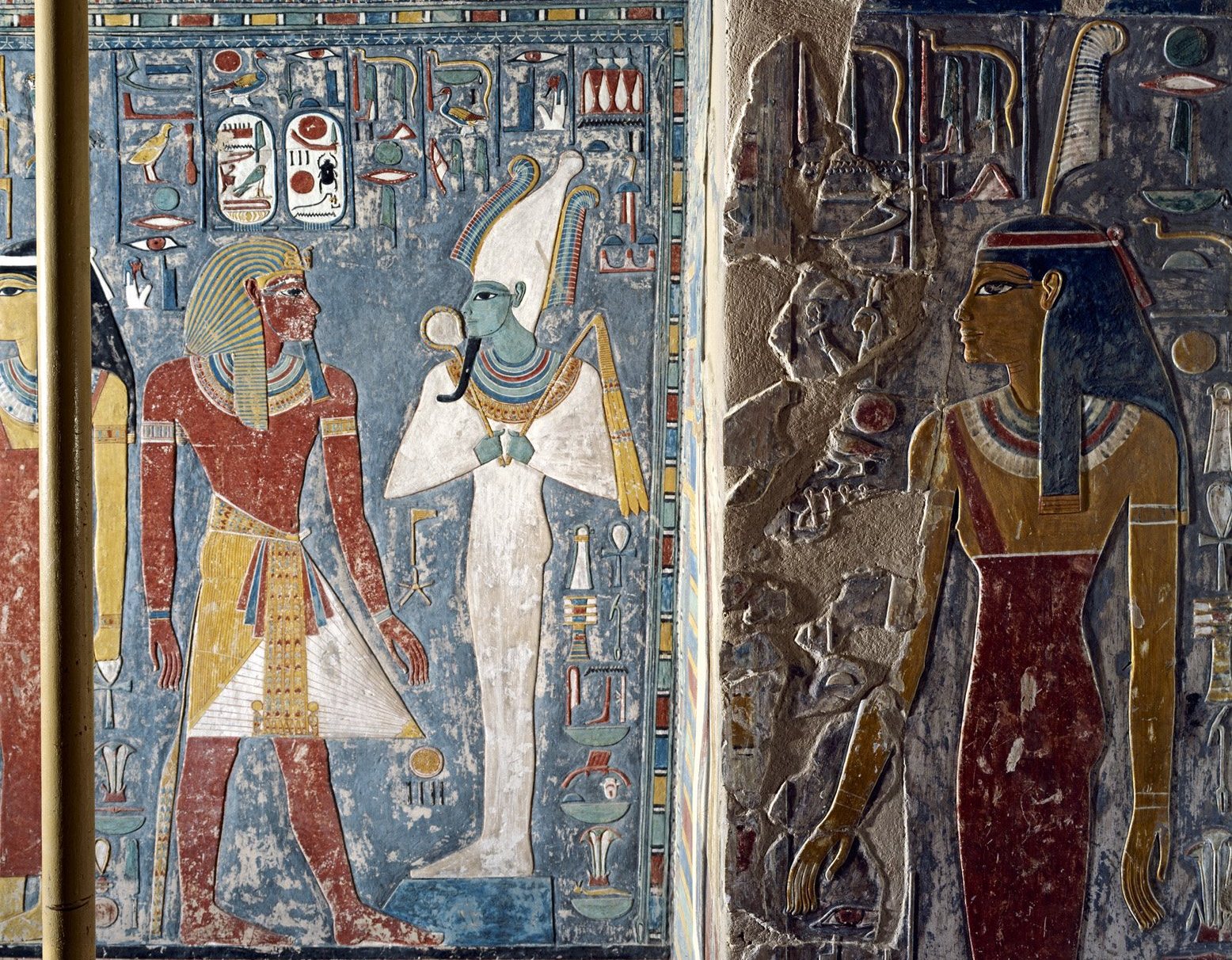King Horemheb's tomb opens in November.
1323 B.C. It was a time of dynastic crisis. Simply put, the king was dead and there was no-one left to take over.
Young Tutankhamun was succeeded by who we believe to be his elderly relative, the "God's Father", Ay. But when Ay died only a few years later, things looks grim. There were no children to inherit the crown. No brothers to step up and manage the kingdom. No sisters to be married off to a new leader, and no wife to act as deputy or rule in her own right.
The illustrious 18th Dynasty family line had come to a full stop.
This was an empire on the brink. If word got out that Egypt was without a strong king, regional governors would be likely to flex their muscles in local power grabs. Worse still, Egypt's enemies often sought a change in kingship as an opportunity to test Egypt's strength. A lack of strong leadership could prove disastrous.
The powers behind the throne during Tutankhamun's reign were two men named Ay and Horemheb. Ay was the closest advisor of the king at the court, while General Horemheb, commander of the army, effectively governed the country on behalf of the king.
When Ay died it was Horemheb who became pharaoh. Even without any royal backing, the general clearly wielded power and sent a strong signal that he was well and truly in charge. He reinstated punishments against corrupt officials and ordered grand construction projects in the Amun Temple complex at Karnak. And just to safeguard his own position, he reorganised the army into two divisions, each with its own general reporting directly to him. No longer could one military leader command the pharaoh's entire military force.
Horemheb married twice, but remained heirless and so nominated Ramesses I, another military man, to succeed him. Ramesses I had already gained Horemheb's favour and become vizier (Chief Minister) and, just as importantly, already had a family. At his coronation, Ramesses I already had a son, Seti I, and grandson, Ramesses II. Both would become pharaohs in turn, and dominate Egypt's history forever.
Although today we list Horemheb as the last 18th Dynasty king, his successors revered him properly as the founder and father of their dynasty, the 19th.
Last week the Egyptian Antiquities Minister, Mamdouh el-Damaty, announced that Horemheb's tomb in the Valley of the Kings (KV 57) will reopen to visitors on November 4. This will coincide with the 93rd anniversary of the discovery of the tomb of Tutankhamun.
Horemheb's tomb was never finished, with the images in his tomb chamber being left as line drawings. However the Well Shaft and Antechamber are bright with vibrant colours.
Pictured is a scene from the Antechamber to the burial chamber. On the Antechamber wall, the king stands in the presence of Osiris, "Foremost of the West [the Underworld]"
On either side of the doorway between the Antechamber and the Burial Chamber is the goddess Ma'at, to receive and escort Horemheb into the hereafter. She wears the Feather of Truth on her head.
Visitors to the Valley of the Kings can purchase a ticket which allows access to three royal tombs (except Tutankhamun's which requires a separate ticket). If you are fortunately enough to be visiting Luxor anytime soon, Horemheb's tomb would be a must-see.
Photo: Sandro Vannini
